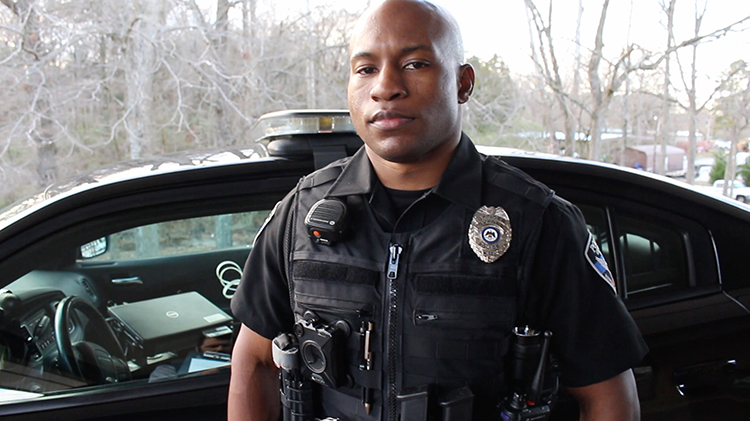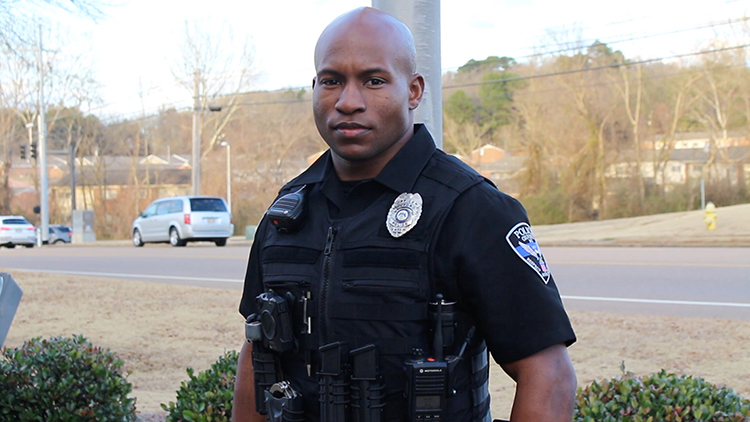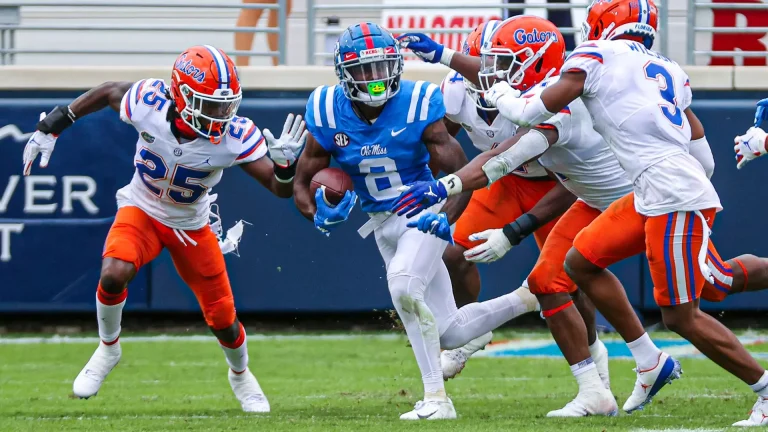
UM alumnus Je'Michael Handy examined data on why driving under the influence of drugs is a major concern in public safety, traffic violations and vehicle crashes and how law enforcement officers recognize drugged drivers for his capstone project in the Master of Criminal Justice program. Submitted photo
Graduate of master’s program in criminal justice details public health and safety warnings
More than 10 million people in the United States—about 5% of licensed drivers—drove under the influence of an illicit drug during the previous year, according to an analysis of the U.S. National Survey on Drug Use and Health.
Despite the mounting research evidence that driving under the influence of drugs—other than alcohol—is common, public awareness of this issue is minimal and drugged drivers are less frequently detected, prosecuted, or referred to treatment, when compared with drunk drivers.
Je’Michael Handy, who recently earned his Master of Criminal Justice at the University of Mississippi, completed his capstone project on exactly why driving under the influence of drugs is a major concern in public safety, traffic violations, and vehicle crashes and how officers recognize drugged drivers.
“In my systematic review of existing literature on the topic, 38% of the studies found that drivers are more likely to drive after using marijuana,” said Handy, an Oxford police officer from Batesville. “Sixty-two percent of the studies found drivers are more likely to drive after using any type of illicit or prescription drug.”
The highest drugged-driving rates reported were among younger, less-experienced drivers.
Nearly a third—31%—of the studies found that drug use was the cause of crashes with injuries or fatalities. Furthermore, 23% of the studies were based in Colorado, which showed how DUI marijuana cases in Colorado are becoming more of a factor, especially since it has legalized marijuana statewide.
And 23% of the studies shed light on how law enforcement officials recognize drug-impaired drivers.
“Law enforcement officials are on the front lines of stopping these crashes and helping to decline the numbers,” Handy said.
Field testing has become one common solution to identifying drug-impaired drivers to address the issue. Law enforcement officials use a drug recognition expert, or DRE, who is part of the Drug Evaluation and Classification Program. This program is commonly used in driving under the influence cases to help determine the categories of impairing drugs present in drivers.
The evaluation process is a systematic, standardized 12-step procedure based on observable signs and symptoms to determine whether a suspect is impaired; whether impairment is due to drugs or a medical condition; and if drugs are suspected, the categories likely causing impairment.
DRE officers can use three tests to determine whether drivers are impaired because of drugs: lack of convergence, modified Romberg balance and finger-to-nose tests. In each exam, the DRE provides instructions and asks whether the suspect understands them, and the suspect must verbally respond with a yes or no.
“Of note, there was discussion of tests conducted by a drug recognition expert on what they do to determine whether an offender is under the influence of drugs while driving or not,” Handy said.
“DRE officers are not the only people who conduct the test. Officers who are certified in the training can conduct the test as well. The tests are a good tool for officers to use since there is no chemical test used like (for) alcohol-related DUI.”
Handy recommends that research be done on creating a machine that can be used to assess a potential drug-related impaired driver. The only other way for officers to get those results are from a blood analysis to see if the driver actually had drugs in their system at the time of their arrest and what type.
Lots of research has examined alcohol-related DUIs, but less is known about the best strategies for identifying and addressing drug-related DUIs, said Kimberly Kaiser, an assistant professor in criminal justice and legal studies and graduate program director.
“This is an important topic, as we are seeing changes in illicit drug use with the rise in opiate addictions and changes in drug laws, such as the decriminalization or legalization of marijuana, all of which may result in potential increases in drug-based DUI events and arrests” Kaiser said.
“While working with Je’Michael this past spring as he developed his capstone project, it was clear to see he was motivated to create something that would be useful to his career and to help inform police agencies who encounter these problems on a daily basis. I believe that Je’Michael will be able to use what he learned through his capstone project in meaningful ways for the community.”

Linda Keena, an associate professor in the Department of Criminal Justice and Legal Studies, characterized Handy as an enthusiastic learner.
“As an undergraduate student, he was always well-prepared and well-organized for each class,” Keena said. “He took his education very seriously and it is reflected in his career and graduate work. It is inspiring to observe him apply the things he learned in our program in a broader context.
“Je’Michael is distinguished from other students by his intellectual curiosity, perseverance toward completing goals, and attentive listening skills. From his life experiences, he has developed an extraordinary ability to conform in diverse organizations and to manage stress and authority figures.”
Handy recently took a job with the Tennessee Highway Patrol. He attributes his success in landing a new position to his experience with the Oxford Police Department.
“My experience with the Oxford Police Department prepared me to be a good trooper.” Handy said. “I want to be a part of an elite group of officers who make a difference in the safety of citizens across the state of Tennessee. There is also a lot of upward mobility.”
Handy explained his experience in the Ole Miss master’s program prepared him for working in law enforcement.
“We did a lot of research papers and the statistics,” Handy said. “Doing the research papers has helped me develop as a writer when I write reports, because when we’re doing an investigation or an accident scene, we have to write a good, detailed report.”
For more information about the Master of Criminal Justice program, visit http://www.legalstudies.olemiss.edu.
By Sarah Sapp/University of Mississippi



